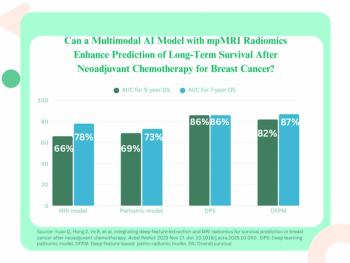
Diffusion tensor imaging uncovers hidden brain abnormalities in elderly patients
A Duke University study has found that diffusion-tensor MRI paints a more complete picture of ischemic hyperintense lesions in the brain than does conventional MR. Findings suggest that brain abnormalities have a much greater neurological impact for older patients than was previously thought.
A Duke University study has found that diffusion-tensor MRI paints a more complete picture of ischemic hyperintense lesions in the brain than does conventional MR. Findings suggest that brain abnormalities have a much greater neurological impact for older patients than was previously thought.
Ischemic lesions, commonly observed by FLAIR and T2-weighted MRI, have been traditionally associated with aging and vascular conditions. Imagers have also found recent evidence of ischemic lesions after invasive procedures such as cardiac surgery. The clinical relevance of these lesions remains controversial, however, because conventional MR sequences alone have not helped correlate the presence of lesions with the patient's susceptibility to neurological disease.
The study suggests the ischemic hyperintense lesions may represent a sign of more extensive injury, according to principal investigator Dr. Warren Taylor, an assistant professor of psychiatry and behavioral sciences at Duke's Medical Center.
Taylor and colleagues performed brain MR and DTI on 82 neurologically healthy individuals aged 60 or older. They measured the volume of hyperintense lesions in subcortical gray matter and anterior white matter using a semiautomated segmentation program. The investigators evaluated the relationship between lesion volumes and DTI-based fractional anisotropy and apparent diffusion coefficient measures against patients' age, sex, and total brain volume.
The Duke group found a link among the presence and size of the hyperintense lesions, deterioration in white matter structural integrity, and higher gray matter diffusion coefficients observed with DTI. White matter lesion volumes depicted with MR were related to the higher diffusivity and lower anisotropy observed with DTI in the dorsolateral prefrontal and anterior cingulate cortices. Gray matter lesion volumes were associated with higher diffusivity in the genu of the corpus callosum and the internal capsule (AJR 2007;188:1695-1704).
As hypothesized, Taylor's group confirmed that DTI assessments of these lesions can explain why patients with a high volume of such lesions develop cognitive or behavioral symptoms such as dementia, memory loss, depression, incontinence, and even higher mortality.
"What we found in the study is that these lesions may just be the visible sign of more widespread disease in the brain. That is, in people with more severe lesions, even brain areas that appear normal on MRI may also be affected, particularly brain areas involved in reasoning," Taylor said.
For more information from the Diagnostic Imaging archives:
Newsletter
Stay at the forefront of radiology with the Diagnostic Imaging newsletter, delivering the latest news, clinical insights, and imaging advancements for today’s radiologists.




























